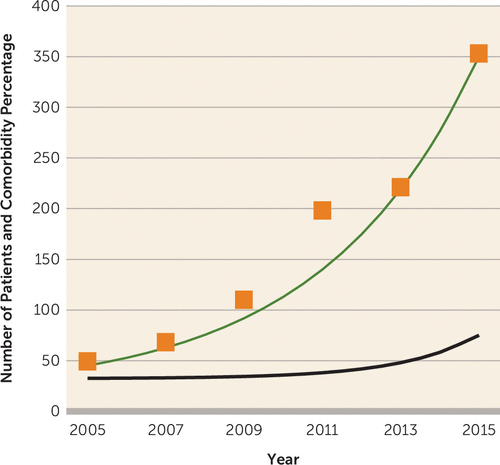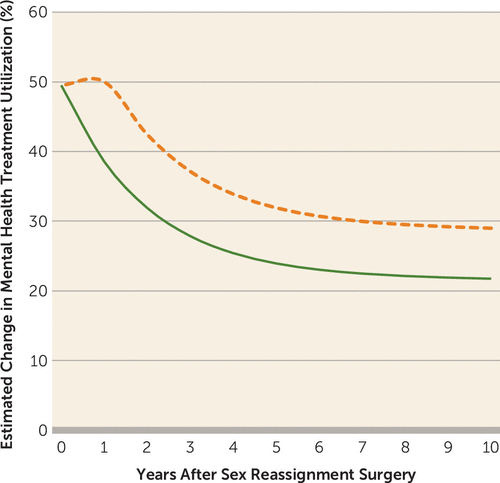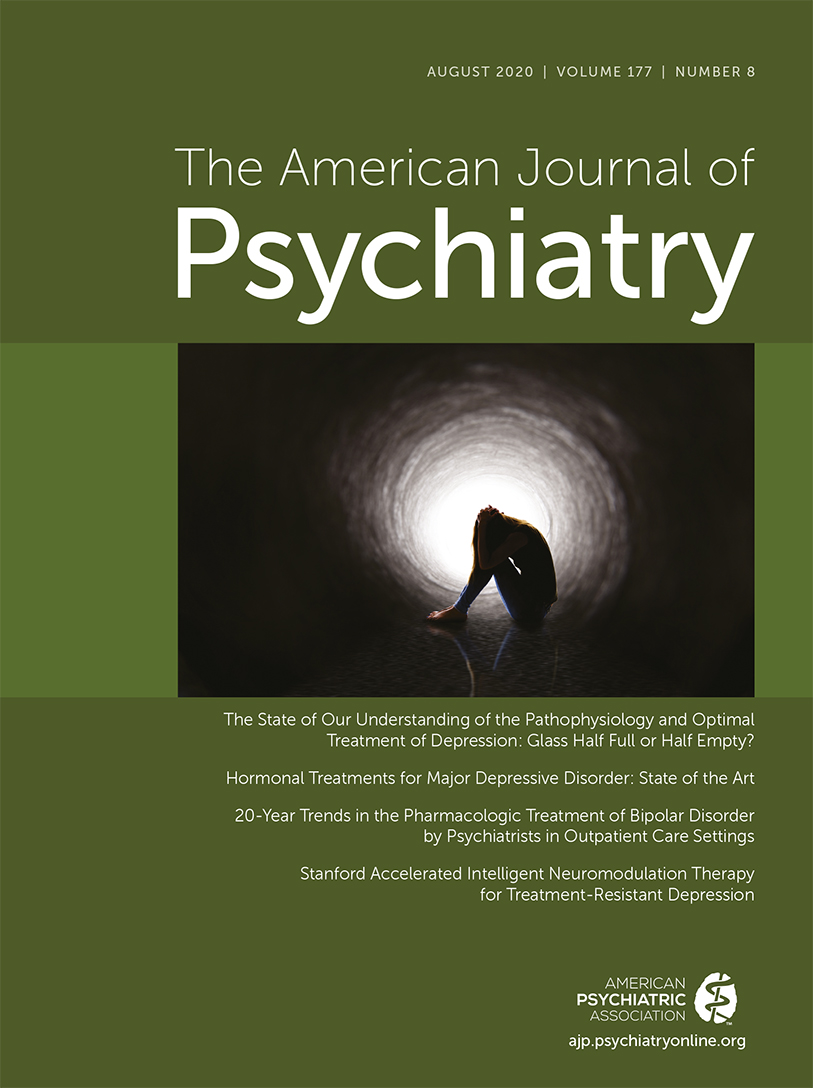Confounding Effects on Mental Health Observations After Sex Reassignment Surgery
To the Editor: Bränström and Pachankis (1) report that Swedes with gender dysphoria who had undergone sex reassignment surgery in the decade to 2015 had a declining need for mental health treatment (as shown in Figure 1 in the article), leading them to consider that sex reassignment surgery improves mental health. However, the same data may be modeled in a way that leads to the opposite conclusion.
Except for a reduction after the perioperative year, Bränström and Pachankis found no further significant decrease in mental health treatment between the first and ninth years after surgery. They allowed for the increase in sex reassignment surgery from 2005 on but overlooked the increase in co-occurring mental health issues, which rose after 2005 but especially from about 2009 (2). A simple qualitative model illustrates how a dramatic change over time in mental health issues will affect the number of individuals accessing mental health treatment in 2015. In our Figure 1, the upper line depicts the rise in the number of sex reassignment surgeries, and the lower dark line depicts the rise in co-occurrence of mental health issues, assuming a final rise of 200% and a final co-occurrence of 75% (3).

FIGURE 1. Qualitative model of the number of sex reassignment surgeries and co-occurrence of mental health issues among individuals accessing mental health treatmenta
a The orange boxes indicate the number of patients, the green line indicates the number of sex reassignment surgeries, and the dark line indicates the percentage of co-occurrence of mental health issues.
Because patients undergoing this surgery in the years closest to 2015 had higher rates of co-occurring mental health issues than those whose surgery happened longer ago, we would expect the decline in mental health treatment to be pronounced (see the solid line in Figure 2), and with a beneficial effect of the surgery over time, the fall should be even more significant. Yet surprisingly, Bränström and Pachankis found only a very small decline over time.

FIGURE 2. Estimation of mental health utilization by individuals in the years after sex reassignment surgerya
a The dotted line portrays projected mental health treatment utilization assuming aggravation of a mental health condition after sex reassignment surgery. The solid line portrays projected mental health treatment utilization assuming no aggravating effects after sex reassignment surgery.
However, if in fact this surgery aggravates a mental health condition by, say, 25%, then a more moderate fall in mental health utilization results (see the dashed line in Figure 2). The qualitative approximation of this curve with the reduction described by Bränström and Pachankis (in their Figure 1) is striking. Therefore, accounting for the increase in mental health issues from 2005, together with an assumption of increased mental health treatment due to this surgery, fits the data in the article and overturns the authors’ conclusions, suggesting that sex reassignment surgery is in fact associated with increased mental health treatment.
1 : Reduction in mental health treatment utilization among transgender individuals after gender-affirming surgeries: a total population study. Am J Psychiatry 2020; 177:727–734Google Scholar
2 : The Coddling of the American Mind: How Good Intentions and Bad Ideas Are Setting Up a Generation for Failure. New York, Penguin, 2018Google Scholar
3 : Two years of gender identity service for minors: overrepresentation of natal girls with severe problems in adolescent development. Child Adolesc Psychiatry Ment Health 2015; 9:9Crossref, Medline, Google Scholar



